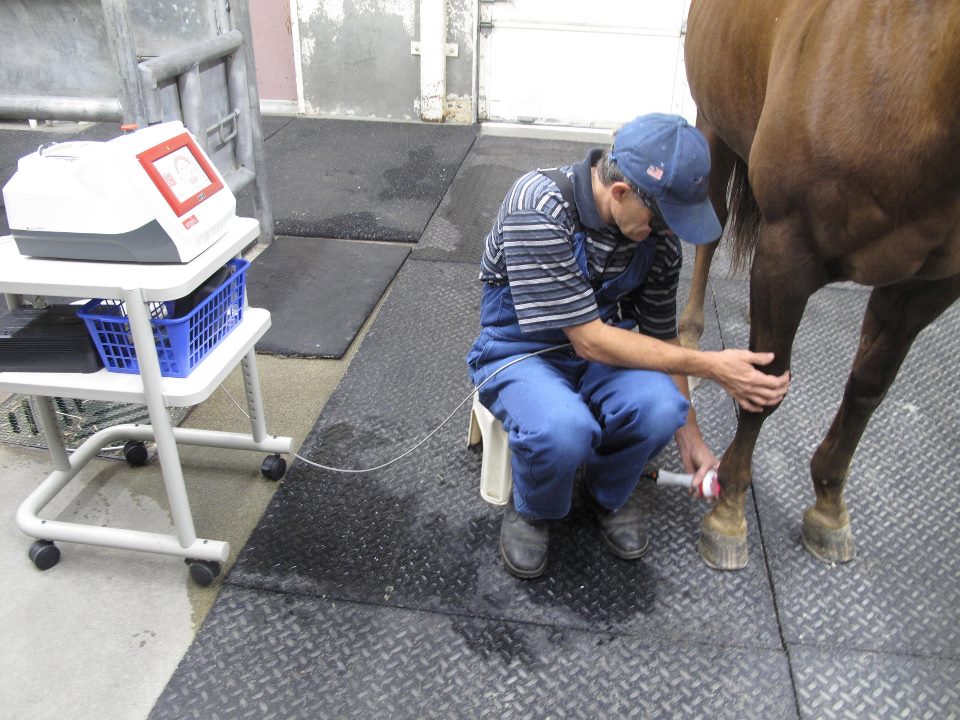Equine Therapy: How It Helps Build Self-confidence and Psychological Toughness
Equine Therapy: How It Helps Build Self-confidence and Psychological Toughness
Blog Article
How Laser Therapy in Horse Therapy Is Changing Veterinary Take Care Of Horses
Laser therapy has emerged as a transformative strategy in equine vet care, supplying a non-invasive remedy that quickens recovery and improves general health. The transportability and flexibility of laser therapy tools additionally highlight their growing necessity among vets.

Comprehending Laser Therapy
Comprehending laser therapy is crucial for appreciating its function in equine treatment. Laser therapy, also referred to as photobiomodulation, involves the application of certain wavelengths of light to tissues, which can result in different biological effects. This healing modality uses the power of light energy to pass through the skin and underlying tissues, promoting cellular procedures and improving tissue repair.
The technology behind laser therapy is grounded in the concept of photochemistry, where photons are soaked up by chromophores within cells, causing boosted ATP manufacturing and modulation of responsive oxygen varieties. This, in turn, advertises cellular expansion, reduces swelling, and accelerates recovery. Veterinary practitioners use various sorts of lasers, including low-level lasers (LLLT) and high-power Course IV lasers, depending on the certain healing purposes and the nature of the equine problem being treated.
Various laser wavelengths and power settings are thoroughly chosen to target different tissue midsts and accomplish desired professional outcomes. Safety and security protocols are extremely important, as improper usage can result in thermal damages or suboptimal therapeutic impacts. Hence, a detailed understanding of laser treatment's mechanisms and applications is important for its efficient implementation in equine veterinary technique.
Benefits for Equine Wellness
The myriad benefits of laser treatment for equine health and wellness include improved recovery, pain reduction, and enhanced wheelchair. This advanced treatment method leverages particular wavelengths of light to permeate tissues, boosting mobile feature and promoting fast cells fixing. The non-invasive nature of laser treatment ensures minimal anxiety and pain for the steed, helping with a smoother healing procedure.

By minimizing inflammation and discomfort, and enhancing cells repair work, laser treatment assists in bring back joint function and muscle mass versatility. Therefore, laser therapy stands as a transformative device in modern horse veterinary care.
Common Problems Treated
Laser therapy has become a versatile treatment option for a variety of usual equine problems. Amongst these, musculoskeletal injuries are specifically amenable to laser treatment. Soft tissue injuries, such as tendonitis and tendon strains, gain from the anti-inflammatory and analgesic impacts of laser therapies, which accelerate recovery and lower pain. Furthermore, laser treatment works for problems like osteoarthritis, where it helps mitigate joint swelling and advertise tissue repair work.
Wound monitoring is another area where laser treatment has actually shown considerable promise. Persistent wounds or slow-healing ulcers can be particularly challenging in steeds, but laser therapy enhances cellular regrowth and boosts blood circulation, therefore quickening the recovery process. Laser treatments have actually been successfully employed in managing unguis conditions such as laminitis and abscesses, minimizing pain and promoting faster recuperation.
Equine professional athletes commonly suffer from performance-related problems like muscle mass discomfort and anxiety cracks. Laser treatment aids in lowering muscle fatigue and quickens the recovery of micro-injuries, therefore use this link making certain that steeds return to peak performance more swiftly. By addressing these diverse conditions, laser treatment is transforming the landscape of veterinary care, giving a non-invasive, efficient alternative to typical treatments.
Innovation Behind Laser Therapy

Laser gadgets made use of in veterinary medicine frequently make use of low-level laser therapy (LLLT) or chilly laser click treatment. Unlike high-powered surgical lasers, these devices operate at lower power levels, enhancing therapeutic benefits while decreasing thermal damage. The power from the laser light promotes adenosine triphosphate (ATP) manufacturing, enhances mobile metabolic process, and speeds up cells repair work processes.
Modern laser therapy tools for equine treatment is created with adjustable setups to satisfy the specific requirements of various cells and conditions. Equine Therapy. Specifications such as wavelength, power thickness, and therapy duration can be carefully tuned, offering customized restorative solutions. In addition, developments in laser innovation have actually resulted in the development of mobile, handheld devices, making it easier for veterinarians to give treatment in a range of setups, from clinics to stables. This technological innovation is a foundation in the revolutionizing of equine vet treatment.
Success Stories and Study
Showcasing the tangible benefits of laser treatment, countless success stories and situation studies illuminate its transformative effect on equine wellness. One such instance includes a pureblood racehorse suffering from persistent tendonitis. Traditional treatments yielded marginal renovation, yet after integrating laser therapy right into the routine, the equine exhibited considerable reductions in inflammation and pain within weeks, ultimately going back to competitive racing.
An additional engaging example includes a dressage horse detected with severe back discomfort, restricting its efficiency. A vet group employed low-level laser treatment (LLLT) to target the inflamed areas, leading to marked enhancement in adaptability and a notable decrease in pain. Over a number of sessions, the equine restored its peak form, showcasing the efficiency of laser therapy in resolving musculoskeletal issues.
Additionally, a study carried out at a leading equine facility examined 50 horses with numerous soft tissue injuries treated with laser therapy. The outcomes were striking: 85% of the equines showed increased recovery times and boosted mobility. These cases underscore the adaptability and efficiency of laser treatment in equine medication, using a non-invasive, scientifically-backed strategy to enhancing recovery and performance in horses.
Final Thought
Laser treatment is changing equine vet care by providing a non-invasive treatment that increases healing, reduces inflammation, and eases discomfort. With its performance in dealing with a variety of conditions, from bone and joint look these up injuries to persistent conditions like osteoarthritis, this modern technology considerably boosts equine wellness and mobility. The portability and versatility of laser therapy additionally underscore its transformative influence on veterinary practices, strengthening its duty as a crucial tool in contemporary equine health care.
Report this page